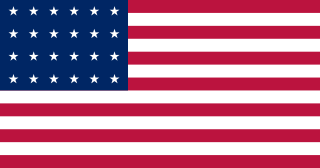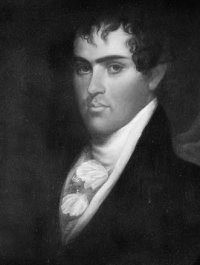It has been requested that the title of this article be changed to List of governors of Arkansas . Please see the relevant discussion on the discussion page. The page should not be moved unless the discussion is closed; summarizing the consensus achieved in support of the move. |
| Governor of Arkansas | |
|---|---|
 | |
| Style |
|
| Status | |
| Residence | Arkansas Governor's Mansion |
| Seat | Little Rock, Arkansas |
| Term length | Four years, renewable once (Seventy-third Amendment to the Arkansas Constitution of 1874) |
| Constituting instrument | Arkansas Constitution of 1836 |
| Precursor | Governor of Arkansas Territory |
| Inaugural holder | James Sevier Conway |
| Formation | September 13, 1836 |
| Deputy | Lieutenant Governor of Arkansas |
| Salary | US$128,000 per year (2016) [1] |
| Website | governor |
The Governor of Arkansas is the chief executive of the U.S. state of Arkansas. The governor is the head of the executive branch of the Arkansas government and is charged with enforcing state laws. They have the power to either approve or veto bills passed by the Arkansas General Assembly, to convene the legislature, and to grant pardons, except in cases of treason and impeachment. [2]
Head of government is a generic term used for either the highest or second highest official in the executive branch of a sovereign state, a federated state, or a self-governing colony, who often presides over a cabinet, a group of ministers or secretaries who lead executive departments. The term "head of government" is often differentiated from the term "head of state", as they may be separate positions, individuals, or roles depending on the country.

In the United States, a state is a constituent political entity, of which there are currently 50. Bound together in a political union, each state holds governmental jurisdiction over a separate and defined geographic territory and shares its sovereignty with the federal government. Due to this shared sovereignty, Americans are citizens both of the federal republic and of the state in which they reside. State citizenship and residency are flexible, and no government approval is required to move between states, except for persons restricted by certain types of court orders. Four states use the term commonwealth rather than state in their full official names.

Arkansas is a state in the southern region of the United States, home to over 3 million people as of 2018. Its name is of Siouan derivation from the language of the Osage denoting their related kin, the Quapaw Indians. The state's diverse geography ranges from the mountainous regions of the Ozark and the Ouachita Mountains, which make up the U.S. Interior Highlands, to the densely forested land in the south known as the Arkansas Timberlands, to the eastern lowlands along the Mississippi River and the Arkansas Delta.
Contents
- Governors
- Governors of the Territory of Arkansas
- Governors of the State of Arkansas
- Notes
- References
- External links
The state has had 46 elected governors, as well as 11 acting governors who assumed powers and duties following the resignation or death of the governor. Before becoming a state, Arkansas Territory had four governors appointed to it by the President of the United States. Orval Faubus (1955-1967) served the longest term as state governor, being elected six times to serve 12 years. Bill Clinton (1979-1981; 1983-1992), elected five times over two distinct terms, fell only one month short of twelve years and Mike Huckabee (1996-2007) served 10 years for two full four-year terms. The shortest term for an elected governor was the 38 days served by John Sebastian Little before his nervous breakdown; one of the acting successors to his term, Jesse M. Martin, took office only three days before the end of the term, the shortest term overall. The current governor is Republican Asa Hutchinson, who took office on January 13, 2015.

The Territory of Arkansas, initially organized as the Territory of Arkansaw, was an organized incorporated territory of the United States that existed from March 2, 1819, until June 15, 1836, when the final extent of the territory was admitted to the Union as the State of Arkansas. Robert Crittenden was secretary of the Territory from 1819 to 1829 and was de facto governor, preparing the territory for statehood.

The president of the United States (POTUS) is the head of state and head of government of the United States of America. The president directs the executive branch of the federal government and is the commander-in-chief of the United States Armed Forces.

Orval Eugene Faubus was an American politician who served as 36th Governor of Arkansas from 1955 to 1967. In 1957, he refused to comply with a unanimous decision of the U.S. Supreme Court in the 1954 case Brown v. Board of Education, and ordered the Arkansas National Guard to prevent black students from attending Little Rock Central High School. This event became known as the Little Rock Crisis.





















































